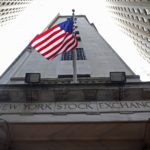The pound preserved daily losses against the US dollar on Thursday, following Bank of Englands decision to keep its benchmark interest rate and asset purchase facility program unchanged in February.
GBP/USD was losing 0.16% on a daily basis to trade at 1.6284 at 13:18 GMT. It touched a daily low at 1.6273 at 11:50 GMT. Support was likely to be received at February 5th low, 1.6253, while resistance was to be met at February 5th high, 1.6341.
BoEs Monetary Policy Committee (MPC) reported on Thursday, it will keep its benchmark interest rate unchanged at a record low 0.5%. MPC also decided to leave its quantitative easing program of monthly asset purchases unchanged at 375 billion pounds.
The minutes of todays policy meeting of the central bank are scheduled to be released on February 19th.
Last week, the Governor of Bank of England, Mark Carney, commented that the UK economy has to strengthen more, before policy makers start scaling back their monetary stimulus.
Kit Juckes, global strategist at Societe Generale SA in London, commented in a Bloomberg interview before BoEs decision, “We are bearish on the pound against the dollar.” “The Monetary Policy Committee meets with no expectations of a policy shift. As the MPC pushes back against market expectations of a rate hike, the pound will struggle.”
The pound declined for a second day against the US dollar, following a report that showed house prices rose at a slower-than-anticipated pace during the three months to January. The sterling came under pressure yesterday, after an unexpected decline in activity in United Kingdoms sector of services.
The mortgage lender Halifax, part of Lloyds Banking Group Plc, said in a report today that house prices increased 7.3% during the three months through January from a year ago, in comparison with a 7.5% increase during the three months ended December.
A report by the market research group Markit Economics in cooperation with the UK Chartered Institute of Purchasing and Supply (CIPS) revealed that the gauge which tracks activity in the UK services sector slowed down to a reading of 58.3 in January, defying analysts’ projections of an advance to 59.1. January’s reading appears to be the weakest in seven months, while in December the index, based on a survey of purchasing managers, came in at 58.8. This indicator is closely watched by traders, as it is considered as a leading indicator for the overall economic performance, because of the early access to company data by the purchasing managers.
Bank of England is expected to release its latest inflation report on February 12th, which will show its updated forecasts for economic output and index of consumer prices.
In 2013, the UK economy expanded at the strongest pace in six years, which pushed the unemployment rate to 7.1% during the three months to November, just above the 7% threshold that the Monetary Policy Committee (MPC) pledged to use as a benchmark for raising the record-low benchmark interest rate. According to the UK Office for National Statistics (ONS), this was the largest decline in unemployment since 1997 and the lowest level since May 2009.
According to BoE’s minutes from its January meeting, the unemployment may hit the central bank’s 7% threshold “materially earlier” than estimated. However, the minutes also revealed that policy makers did not feel pressured to take immediate actions for raising interest rates, if the threshold is reached too soon. Yesterday, Mark Carney also reiterated that the MPC did not need to take immediate actions for raising costs of borrowing.
The sterling has appreciated 9.2% in 2013, marking the best performance among the 10 developed-nation currencies, which are tracked by Bloomberg Correlation-Weighted Indexes. At the same time, the US dollar has risen 4.6%.
Meanwhile, the greenback experienced selling pressure, after Automatic Data Processing Inc. (ADP) reported on Wednesday that private sector in the United States added 175 000 new jobs in January, trailing analysts’ expectations of an increase in jobs number to 185 000. The number of new jobs added in December has been revised down to 227 000 from 238 000 previously. The ADP index is released two days before the release of the official data by the US Department of Labor. The report, due to be published on Friday, may show non-farm payrolls increased by 180 000 in January, after they rose by 74 000 in December, or the weakest level since June 2012.
The company-employment “number wasn’t dramatic on either side, it really focuses the attention back on the jobs numbers,” said Chris Gaffney, co-chief investment officer at EverBank Wealth Management Inc., cited by Bloomberg. “The dollar has lost some of its safe-haven appeal. The economic numbers we’ve seen in 2014 are bringing investors back to a more realistic assessment of the economy.”
The greenback briefly pared losses yesterday, as data by the Institute for Supply Management (ISM) made it clear that corporate structures in US services sector increased their activity in January. The corresponding PMI came in at a reading of 54.0 last month, exceeding experts’ forecasts of a value of 53.7, after the index stood at 53.0 in December. Values above the key level of 50.0 are indicative for expansion in the sector.
Elsewhere, USD/JPY hit a session low at 101.33 at 08:31 GMT, after which consolidation followed at 101.43, losing 0.02%. On February 4th, the pair touched 100.75, the weakest level since November 21st. Support was likely to be received at February 5th low, 100.80, while resistance was to be met at February 5th high, 101.69.





